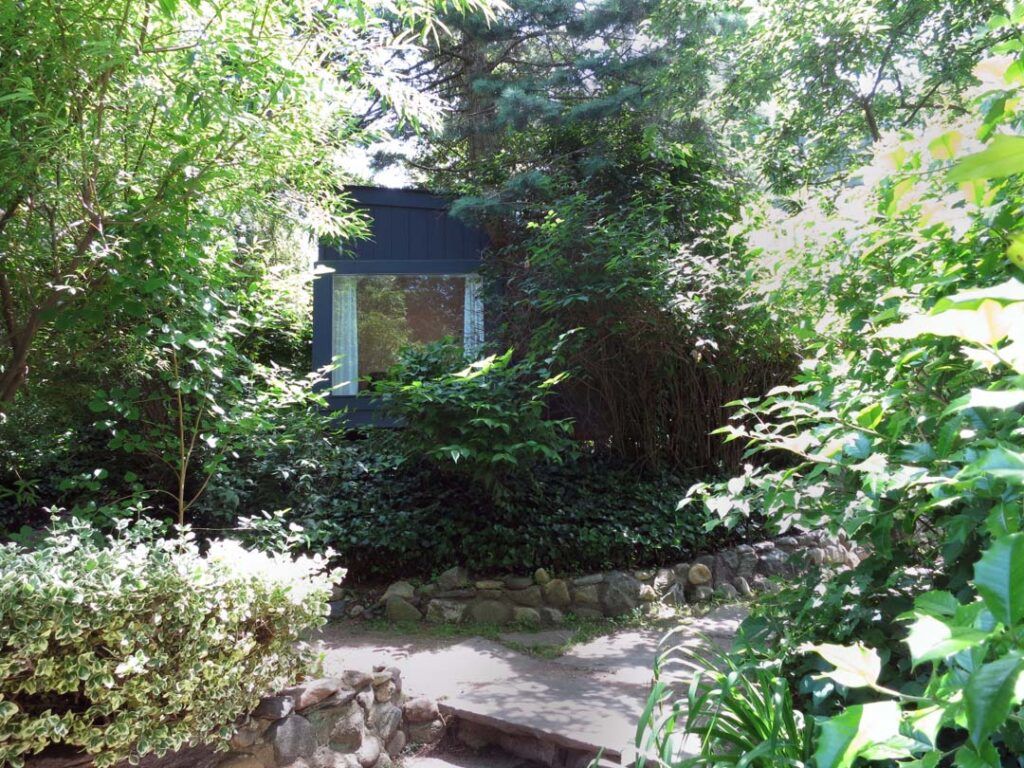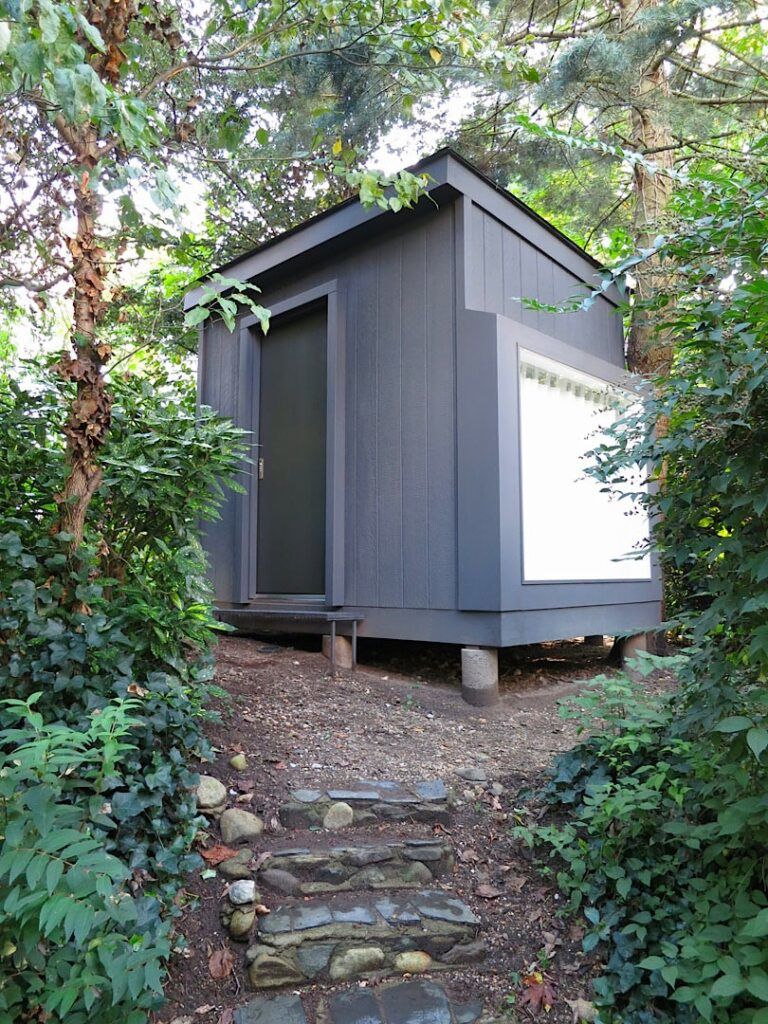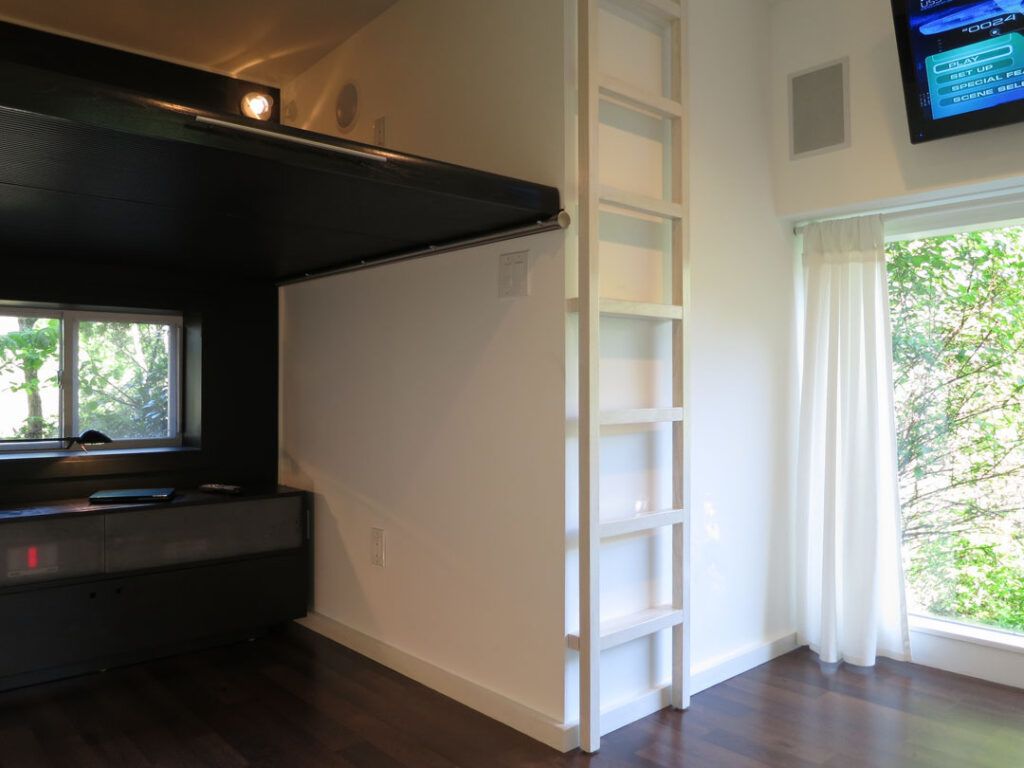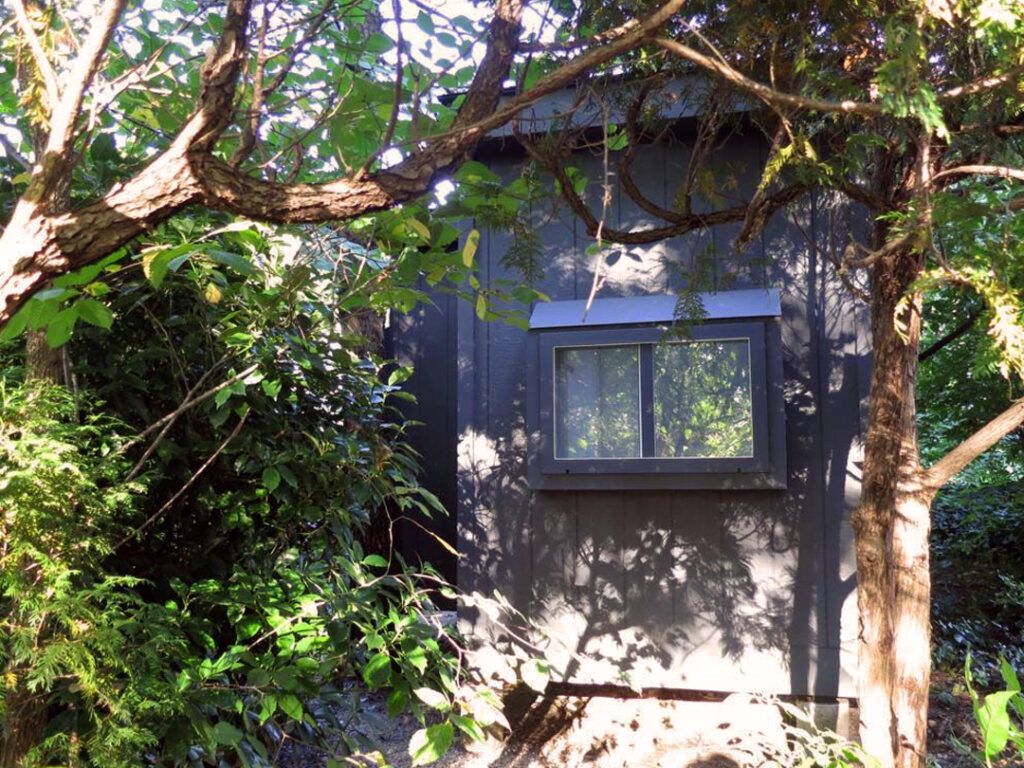Tiny Pod House Packs Big Personality

This tiny 125-square-foot garden retreat provides a serene escape from the outside world, surrounded by beautiful natural greenery. Dubbed the Metapod, the diminutive dwelling was designed and built by Jerome Levin as a model of affordable, sustainable living.

The environmentally-friendly pod house has a concrete foundation and traditional frame construction, with sheetrock walls on the inside and LP SmartSide siding panels on the outside.

Inside, the Metapod contains a fold-up oak loft bed, study area, and entertainment area. In-wall wiring provides the infrastructure for A/V materials and internet connectivity.
Rather than the traditional swinging door or even a sliding door, a custom pocket door was designed for the Metapod to increase the interior space.

The Metapod can be adapted to act as an off-the-grid, affordable housing or vacation home. It would also make the perfect backyard office or study space.
According to Levin, the tiny house is mean to help people learn to live beyond material gains and attachments. The very small area and lack of room for excessive belongings encourages a rather spartan lifestyle.

More from the architect:
“This is a small garden retreat that both children and adults can enjoy. Consisting of just 125 square feet, it includes a study area, entertainment area, and a handcrafted collapsible oak loft bed. A surveillance system, in-wall wiring for audiovisual components, speakers, an intercom, and internet connectivity are all technological features of the space.”
“A pocket door was also custom designed to maximize the interior usable space. This garden retreat — coined a Metapod — can also be adapted to be used as a sustainable, affordable, and off-the- power grid housing. A feeling of peace and communality from a chaotic world sets it apart from other garden retreats and gives it an almost monastic feel. All of these features contribute to the singularity and character of this project.”




